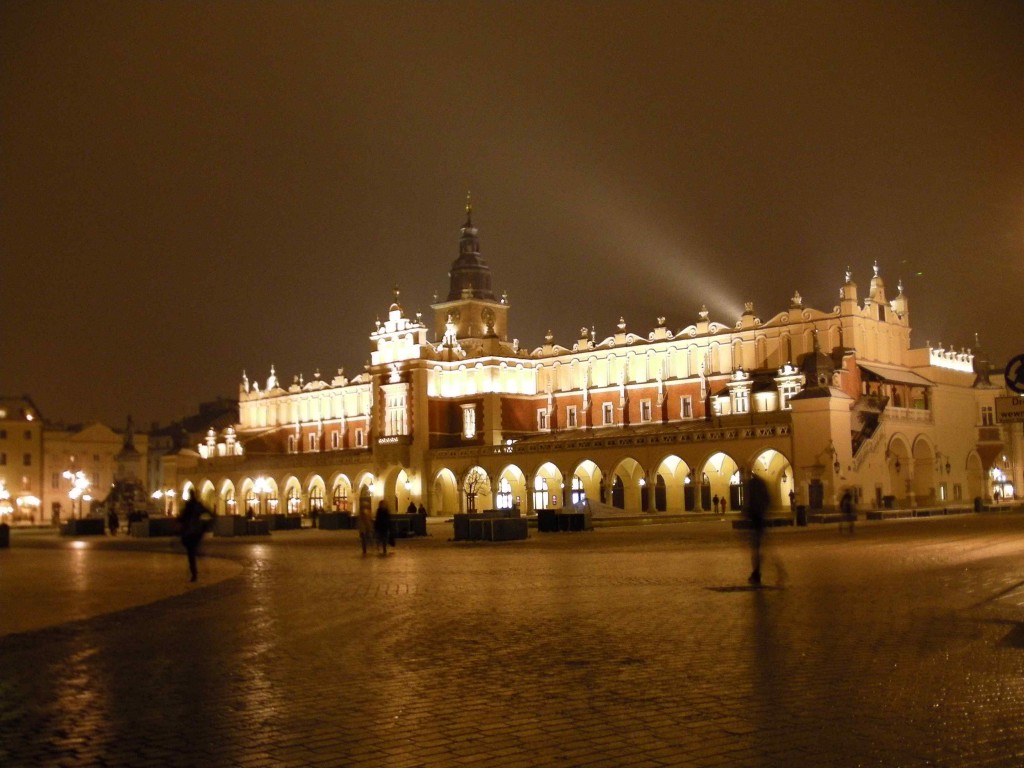
Some folks mentioned to me that visitors to Poland usually have one of two reactions: they love either Warsaw or Kraków. Although I wasn’t taken by the city when I was there, Kraków, in retrospect, is a great city. I spent a week and a half there debating life, drinking coffee and vodka in the Kazimierz district (especially at the Moment Restobar), trying to learn Polish, visiting the Bar Mlecny on Ul. Grozdka (milk bars = cheap Polish food) and preparing for my Search for a Cemetery in Southeast Poland.
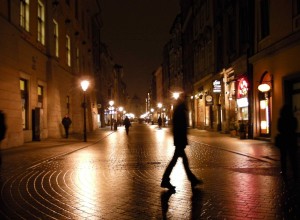
My opinion of Kraków would have changed earlier had I taken a walking tour first and then done everything else. The tour was well worth it. Although advertised as “free,” the folks running the tour depend on the tips paid out at the end of the tour. I tipped 10 PLN (about $3.25) for the 2-hour walk through the city. That tour opened my eyes to the vast history surrounding the city. It was after hearing the tour guide’s presentation that I especially noticed the north-south differences: folks who like Warsaw don’t really like Kraków. Folks who like Kraków, don’t really like Warsaw. It has to do with the architecture of the cities. Warsaw was completed bombed by the Nazis so city looks a whole lot newer and polished. Kraków, however, was favourited by the Nazis and thus preserved during the war, giving the city an “aged” look.
The tour started in the city centre, right by the Mariacki Church (the same one that hosts the hourly bugle call) and finished at Wawel Castle. During the tour I learned that Kraków USED to be the capital of Poland until a few hundred years ago when the capital was moved to Warsaw. Since then, Kraków has housed the remains of royalty while Warsaw hosts the remains of presidents etc. So when the Polish President died in a plane crash in 2010 and was subsequently buried in Kraków, that caused some commotion. Things were sorted out and he’s still in Kraków.
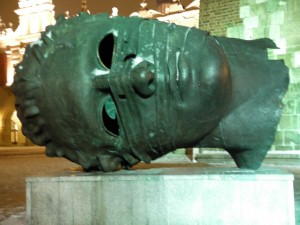
Whilst in the main square, we were exposed to the church with a bugle call and a shit head. Bugle call? Shit head? Well, the bugle call belongs to the Mariacki Church, which, if you walk in, is absolutely stunning. After seeing so many churches in Poland I got kinda numb to them but this one made me say full loud “Holy shit. That’s nice.” Much to the chagrin of the folks around me. I tried to take a picture but they didn’t turn out. Stunning. Go visit. It’s free. And remember to pray. The shit head, I forget some of the story, but it was a gift to the city. Unfortunately, the statue is nicely located so all the bar-hoppers have a toilet in which to relieve themselves, before, during or after their night out.
Speaking of churches, the walking tour also took us by the “Pope window.” Though now marked by a picture of Johannes Paulus Secundus, it’s where he, the first non-Italian Pope, used to stay when he was in Poland. Often he would address followers and believers from his balcony.
Then there’s the Florian Gate, an old gate at the edge of city centre. My attention was waning with the movement of tourists down the street, but I recall my guide saying that the gate was well preserved because it creates a wind tunnel that lifts the skirts of women. Maybe that’s why Polish women wear nice underwear. In any event, the gate used to be the the main northern gate, just outside of which lies the Barbican, part of the old defence system of the city.
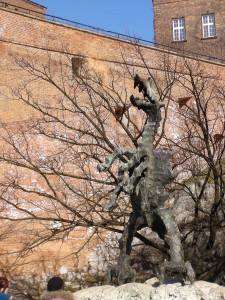
Then there is the story of the castle, dragon, and the virgin. I can’t remember most of the story but I recall the tour guide saying something about a lack of virgins to offer the man who could slay the dragon. I could be wrong. The “real” story is that there was a dragon terrorizing the local population until Mr. Krakus (after whom the city is named) slayed the dragon by dressing up some sulphur in sheep’s skin.
The museum in the Sukiennice building (“cloth hall”, pictured above) was good an hour of entertainment, mostly because of the very cool interactive iPod exhibit. The iPod was free when we went. When you pointed the iPod at a special mark near the exhibit, it would play a movie about that painting. Very cool… but sometimes it didn’t work properly. Either my positioning was wrong or the thing just had some glitches that weren’t yet ironed out. In any event, I like the idea. Even without the app, the paintings themselves were great to admire. A good portion of the paintings took up entire walls. Small museum, but worth the trip.
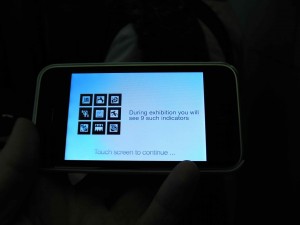
Lastly, one of the more infamous places to visit in Kraków is Schindler’s Factory, which is an important piece of the larger historical significance of Poland. I also visited Schindler’s Factory. Schindler’s Factory was an interesting exhibit and displays all the information you need to know about the near-extermination of Jews in Poland. There’s even a Nazi flag with spit on it. The thing I took from this museum is that if you’re smart during a war, you’ll be executed more quickly. Same with musicians. To be stupid means to be sent to the camps to work until your death. Makes me wonder about my career and travel choices.
Next up would be a visit to Auschwitz and the Wieliczka Salt Mine.
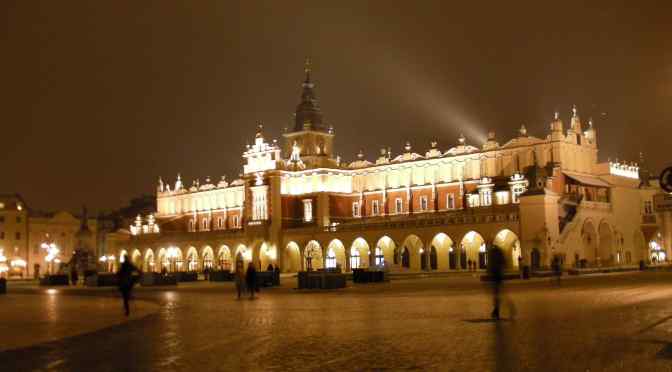
Comments
5 Responses to “Kraków, Poland: A Shit Head and A Dragon”
did you try Zapiekanki at Nowy Square ? Delicious polish cuisine ;]
Yep, tried it in a little place just off the main road near the Kazimierez district. It was much better than the one I tried in Kutno which tasted like jellyfied ketchup topped with mayonnaise. I almost wretched after that one. Really loved the Polish pierogies and that soup with the kolbasa in it… I forget the name. Amazing 🙂
[…] I understand the difference between cities like Warsaw and Krakow or Kyiv and Lviv. Warsaw and Kyiv, both capital cities of their respective nations, have been […]
Hahaha!!! Shit head! 🙂
Nice blog post, like it!
About “shit head”. This work depicts a fragment of an ancient monument to Eros, the god of love, here blindfolded, suggesting that love is blind.
It’s author, Igor Mitoraj is one of the foremost Polish artists to have gained international success. He creates gigantic figures of ancient gods, heroes, muses and titans, often depicting them as bandaged heroic figures.
Some suggest that this mutilated head represents a loss of history, myths and of a connection with higher powers; to others it is a criticism of contemporary civilization and a warning against its destructive power.
Ah ha! Thank you for the post and the compliment!